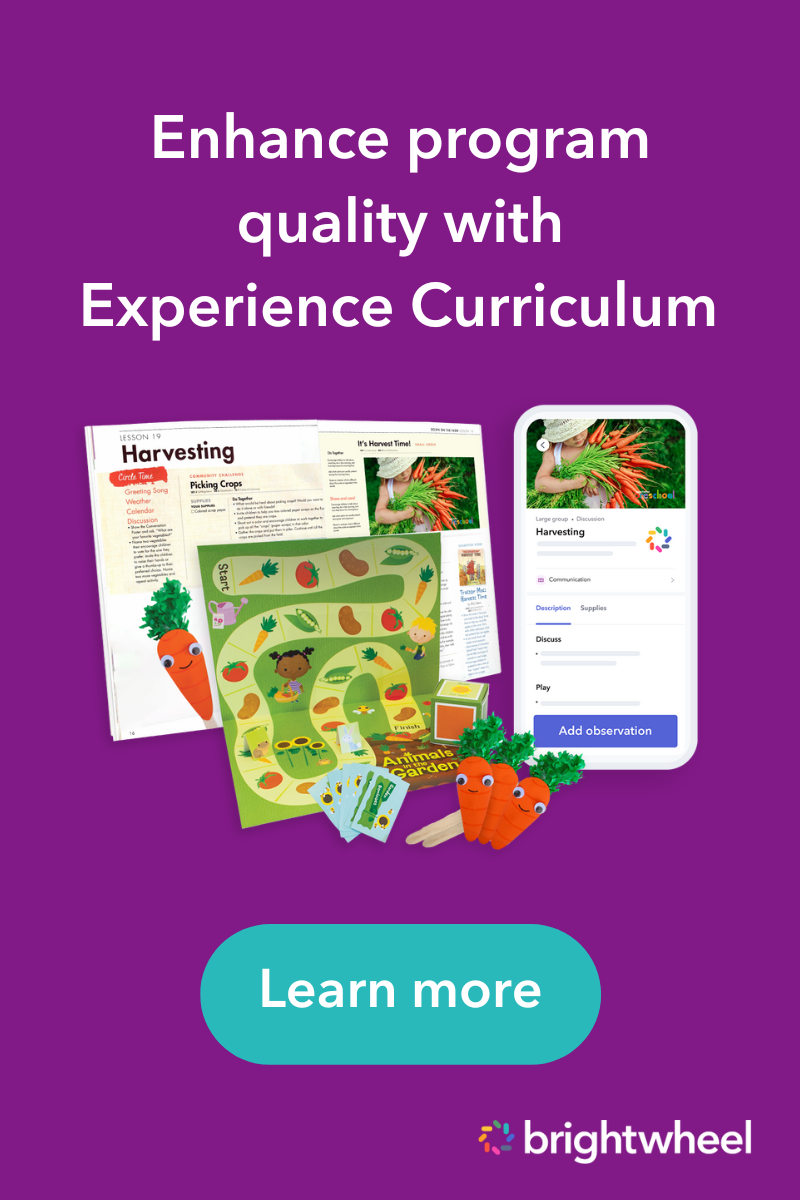How do you know if a preschool curriculum can help your preschoolers learn the skills they need to be ready for kindergarten? A curriculum that's supported by the latest child development research may give you peace of mind. A research-based, content-rich curriculum consists of comprehensive, domain-specific lessons that are supported by research into how children learn and develop.
Using a research-based curriculum to teach your preschoolers helps them develop a foundation of knowledge within each developmental domain that can be built upon as they advance to kindergarten.
In this article, we’ll provide an overview of research-based preschool curricula, explain the criteria that make a curriculum research-based, and explain how to use a sequence of learning experiences to create a research-based curriculum for your children.
What is a research-based curriculum?
A research-based early childhood curriculum is supported by the latest findings in child development and education research. A research-based preschool curriculum consists of content-rich, domain-specific lessons that are developmentally appropriate.
- Content-rich: Research-based early childhood curricula give children background information that supports their understanding of concepts and deepens their learning experiences.
- Domain-specific: All of the lessons in a research-based early childhood curriculum are focused on a single domain of development.
- Developmentally appropriate: Research-based childhood curricula treat each child as an individual with unique cultural experiences that inform how they learn.
Using a research-based curriculum helps you ensure your preschoolers learn concepts they will need to know in kindergarten. Research-based preschool curricula help children learn skills that are appropriate for their stage of cognitive development and promote teaching practices and learning experiences that have been proven to positively affect children's academic progress and development.
The lessons in a research-based preschool curriculum are guided by learning frameworks and teaching strategies that meet early childhood education standards. For example, Head Start programs use the Head Start Early Learning Outcomes Framework to guide curriculum development and create lessons that align with the U.S. Department of Health and Human Services standards for early learning.

What makes a preschool curriculum content rich?
Content-rich curricula add context to lessons and allow children to learn about multiple topics at once, which broadens the scope of lessons. Content-rich curricula may also boost children's math skills.
An observational study of over 300 Boston preschoolers found that children exposed to a content-rich curriculum experienced positive gains in their math skills during the school year. The content-rich curriculum taught the children background information that improved their understanding of the study’s subject matter and helped them apply their skills to a new mathematical task related to the study’s subject matter.
You can use content-rich lessons to teach children about the world while helping them develop their skills in developmental domains. For example, you can read your preschoolers stories that feature diverse characters and settings to help them strengthen their language and social-emotional skills while also teaching them about different cultures, communities, and traditions.
What makes a preschool curriculum domain specific?
A domain-specific, research-based curriculum includes lessons that develop children's skills in a particular domain of child development (i.e., physical, cognitive, social-emotional, or language development). For instance, a curriculum focused on the cognitive domain would contain lessons supported by the latest research into the instructional methods that positively impact children's cognitive development, such as using sensory play to encourage children’s problem-solving skills or using pretend play to encourage children to engage in conversation and strengthen their language skills.
A domain-specific curriculum can make it easy for teachers to complete thorough professional training because they can focus on learning the best way to teach lessons within a single domain rather than gaining a broad knowledge of all developmental domains simultaneously.
What makes a preschool curriculum developmentally appropriate?
A developmentally-appropriate curriculum builds up each child’s skills and makes every child in your program feel valued by accounting for their unique personal and cultural identities. A developmentally-appropriate curriculum helps your children reach their potential by considering how each child's background, social and cultural contexts, and level of development may impact their learning experiences.
The National Association for the Education of Young Children (NAEYC) recommends that teachers craft curricula that counter biases and foster a positive learning experience for every child. A developmentally appropriate curriculum presents children with "mirrors and windows"—opportunities to see themselves and their communities reflected in lessons and opportunities to learn about communities that may be unfamiliar to them.
How is a sequence of learning experiences used in research-based curricula?
A sequence of learning experiences is a set of lessons in a curriculum that gets more difficult as children progress, which helps them develop new skills. Each sequence outlines the plans you can follow to support children at each level of development as they learn new concepts and extend their knowledge.
Sequences of learning experiences make lesson plans flexible and developmentally appropriate and help teachers create lessons that meet their state's academic standards while supporting children's development. Teachers can use these sequences to respond to children's academic needs individually and support children who may need additional assistance when learning concepts, such as children with disabilities or who speak English as a second language.
Examples of research-based curriculum
Early learning standards for early childhood education curricula vary from state to state. Before choosing a curriculum for your preschool program, review the requirements for your state to understand the desired outcomes for children at each developmental stage.
Brightwheel's Experience Curriculum is a research-based curriculum system that strengthens preschoolers’ physical, language, social-emotional, and cognitive skills through cross-disciplinary play-based and project-based lessons. Each curriculum in the Experience Curriculum system uses a developmental continuum to help educators keep track of their preschoolers’ progress toward developmental milestones.
Here are some examples of the early childhood education curricula in Experience Curriculum:
View all states here.
Final thoughts
Using a research-based preschool curriculum that's content-rich, domain-specific, and developmentally appropriate can help your program meet your state's standards. Teaching your children a research-based curriculum can help them succeed in your program and positively impact their academic performance beyond preschool.


